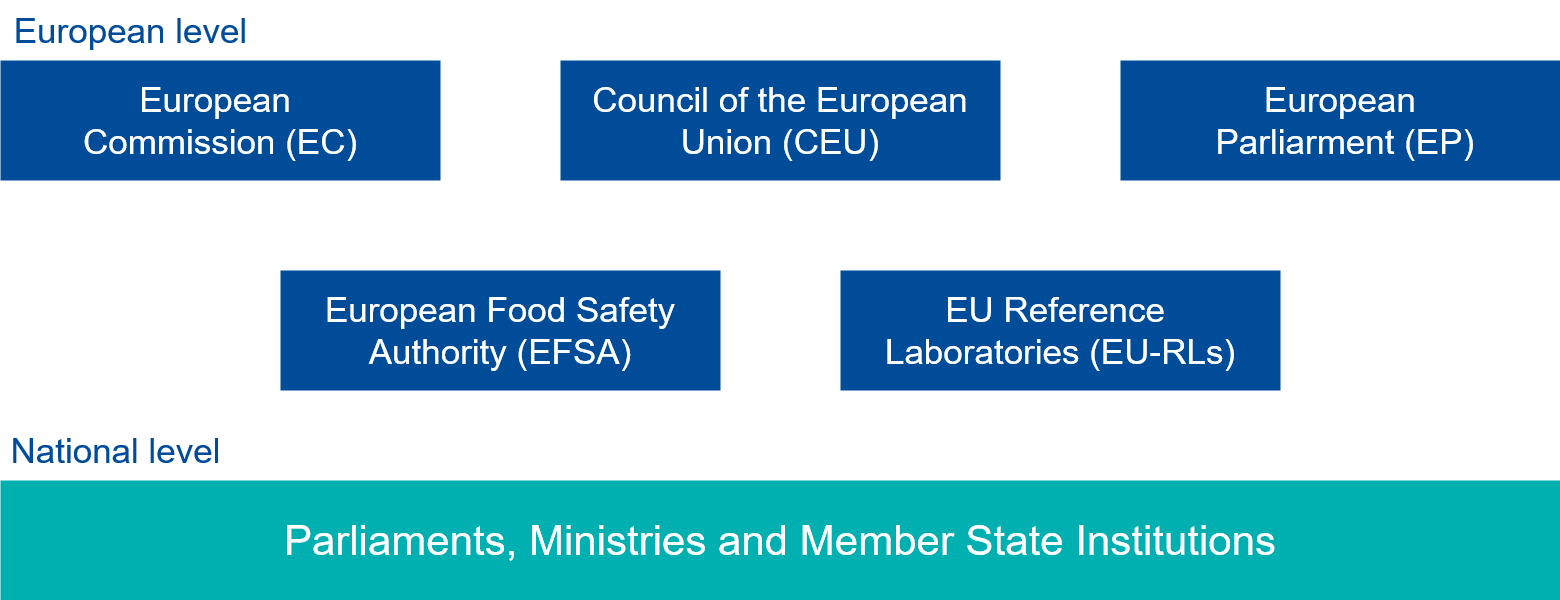European Commission
http://ec.europa.eu Brussels, Belgium
- Risk management
- European law making
- Food safety policy
It is the role of the European Commission (EC) to promote the general interest of the EU as a whole. The “College of Commissioners” (currently one commissioner from each Member State) defines policy and makes decisions, not defending the specific national interest.
The EC is the EU's executive body: as the “guardian of the treaties”, the EC is responsible for ensuring that EU law is properly implemented and applied in all EU Member States. In the event of infringements or doubts about the interpretation on EU law, the European Court of Justice has the final say.
The EC is the only institution with the right of legislative initiative (or can respond to invitations from the EP, the European Council, the Council of the European Union). In practice, the proposals for legislation (regulations, directives and decisions) are prepared by specific EC departments. The EC Directorate-General for Health and Food Safety (DG SANTE) prepares draft legislation in the area of food and feed as well as animal and plant health, for example, while the EC Directorate-General for Environment prepares draft legislation in that area.
Through the activities of Directorate F - Health and Food Audits and Analysis (Regulation (EC) No. 882/2004, Articles 45 and 46), which is part of the EC DG SANTE, the EC assesses how EU regulations related to food and feed safety, animal health, animal welfare, plant health and in the area of medical devices are implemented and enforced within the EU and in non-EU countries that export to the EU. This is achieved mainly through inspections of the competent institutions of the Member States and non-EU countries. The Directorate F - Directorate Health and Food Audits and Analysis provides information on the results of its assessments. Where appropriate, it also recommends measures to remedy shortcomings and monitors their implementation. Inspection reports are published on the Internet along with the comments by the countries inspected.

